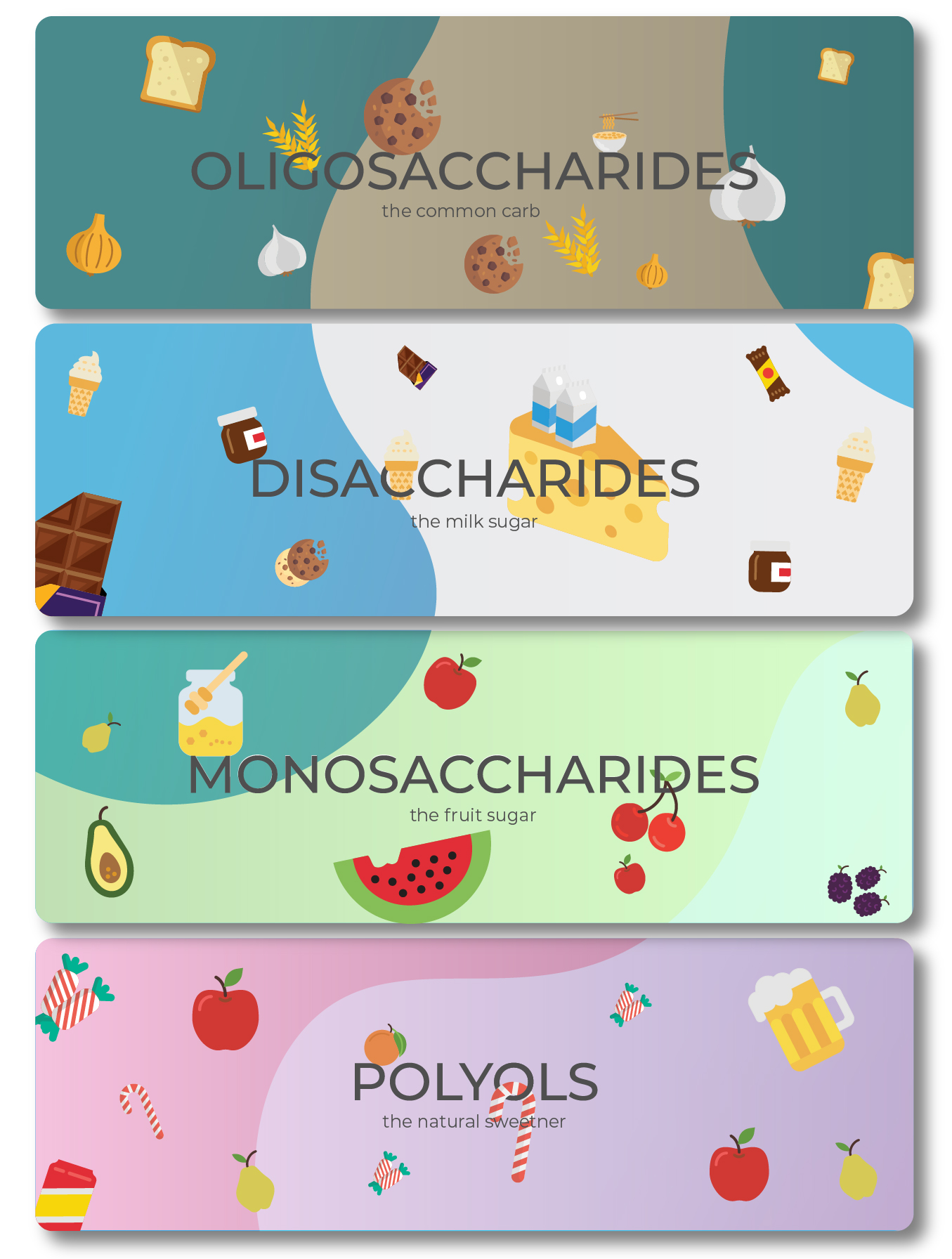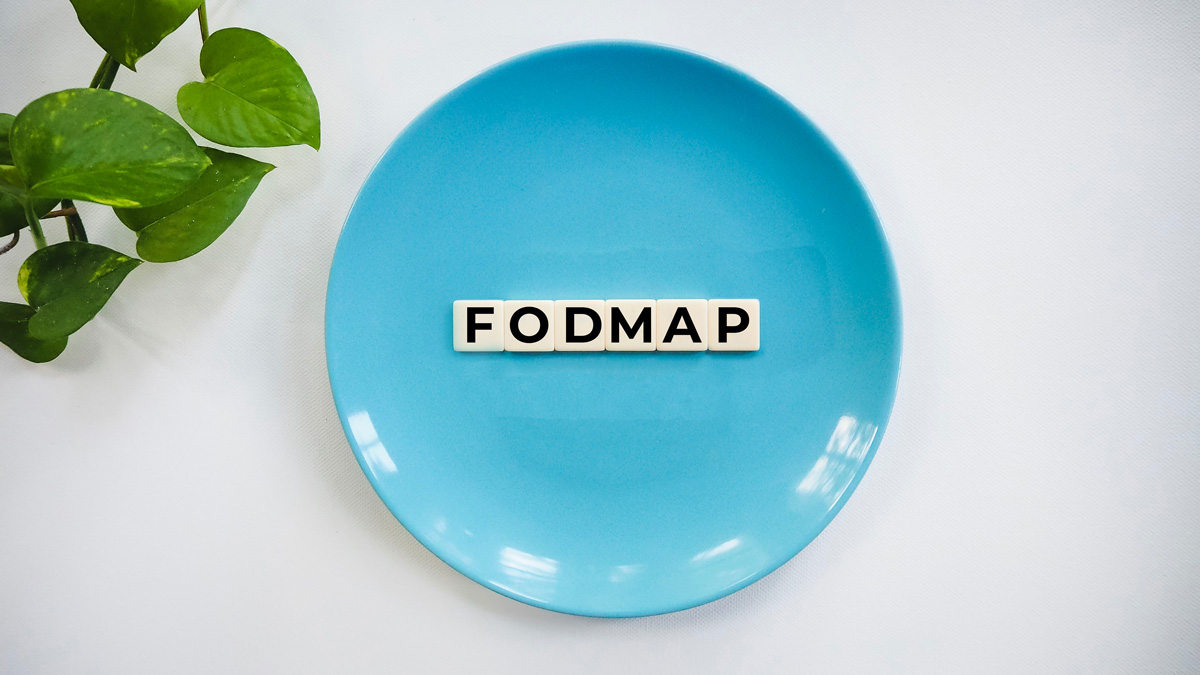What is the low FODMAP diet?
The Low FODMAP diet is acknowledged as a very significant breakthrough for managing IBS symptoms. It was developed by Sue Shepherd, a researcher working at Monash University in Australia. During a study into IBS, they discovered ingredients found in common foods that can cause digestive difficulties. These ingredients are called FODMAPs (you can read more about these below).
Since its development, the Low FODMAP diet has become the gold standard in management of IBS related symptoms and other similar digestive issues. The traditional Low FODMAP diet involves cutting out FODMAPs for a period of time (known as the elimination phase), and gradually reintroducing FODMAP components to see which ones you can tolerate (the reintroduction phase). It’s important to reintroduce FODMAPs you can tolerate to maintain a healthy, balanced diet.
How can FODMAPs cause problems?
FODMAPs can trigger digestive problems in two ways. Firstly, by their nature, FODMAPs can be hard to digest and so if your body does not properly absorb a FODMAP in the small intestine, it can travel to the large intestine, where it is broken down in a process called fermentation. Gases, including hydrogen and CO2 are produced during this fermentation process, and a build up of these gases can cause pain and bloating in those with a sensitive gut, for example somebody with IBS. Secondly, some FODMAPs draw water into the small intestine and cause symptoms like diarrhea and bloating.

Where do you find FODMAPs?
FODMAP is an acronym for Fermentable Oligo-, Di-, Mono-saccharides And Polyols. As mentioned above, when the amount of FODMAPs exceeds the threshold level of an individual, it causes a variety of digestive symptoms in varying severities.

Oligosaccharides:
Oligosaccharides are shorter chain sugars that we humans don’t have the enzymes to digest. It is made of Fructo-oligosaccharides (FOS) and galacto-oligosaccarides (GOS). FOS is also known as fructan, which is a collective name for chains of fructose sugars (with varying lengths). Another common fructan is inulin, which differs from FOS due to its longer chain length.
Disaccharides:
Lactose is a disaccharide sugar (two sugar units joined together). To absorb lactose, the lactase enzymes on the small intestinal wall break it into two single sugar units so it can be further absorbed by our body. Once a baby is weaned (moved to solid food) the level of lactase decreases and for some of us, the level is too low, resulting in lactose intolerance. Interestingly, somebody with lactose intolerance can usually tolerate up to 12g of lactose/day. Lactose containing foods are very nutritious, so maintaining even a certain amount in your diet is very important for healthy development.
Monosaccharides:
Fructose contains only one sugar unit. It also has the highest osmotic potential (i.e.) ability to draw water into the small intestine when it is not absorbed properly.
Polyols:
Sorbitol and mannitol are used as artificial sweeteners in candies and soft drinks as well. Polyols aren’t absorbable completely by most people, and this causes digestive issues.
So what do I do if I suspect FODMAPs are an issue?
Everyone reacts to each of these FODMAPs differently. As a result, one of the greatest challenges for people with digestive issues can be in finding which FODMAPs cause problems for them. The key to this is in testing your unique response to different FODMAPs, so you don’t cut out healthy foods unnecessarily.
- All about Fructose
- All about Fructans
- All about Sorbitol and Mannitol
- All about Lactose
Header image by Vegan Liftz, Unsplash
FoodMarble AIRE is the world’s first personal hydrogen breath tester. It is a pocket-sized breath analysis device. It helps people with chronic digestive issues determine the foods that work best with their digestive system.
Read user reviews of FoodMarble AIRE on Trustpilot
To learn more about FoodMarble, visit foodmarble.com or follow us on our social media channels





